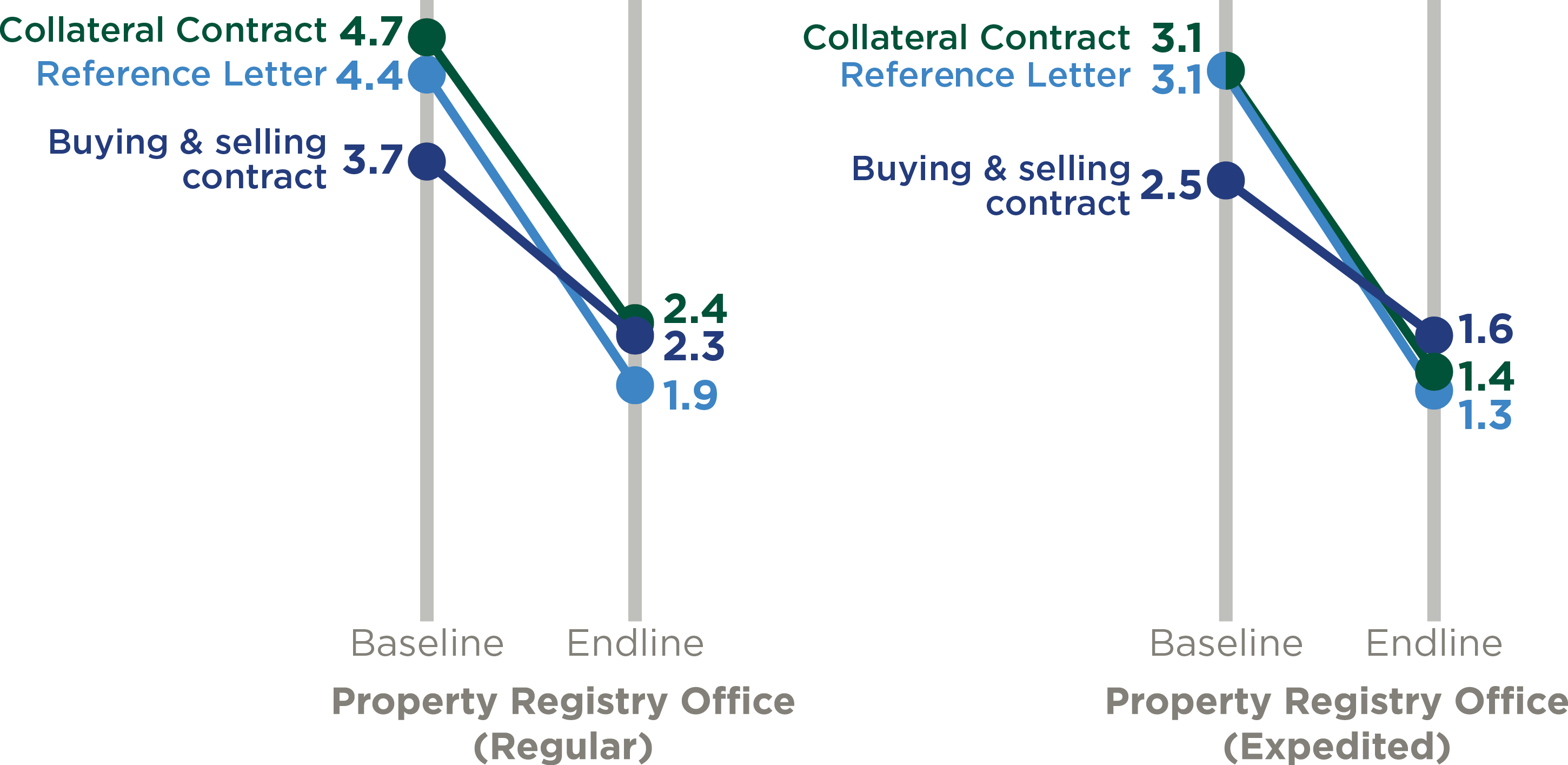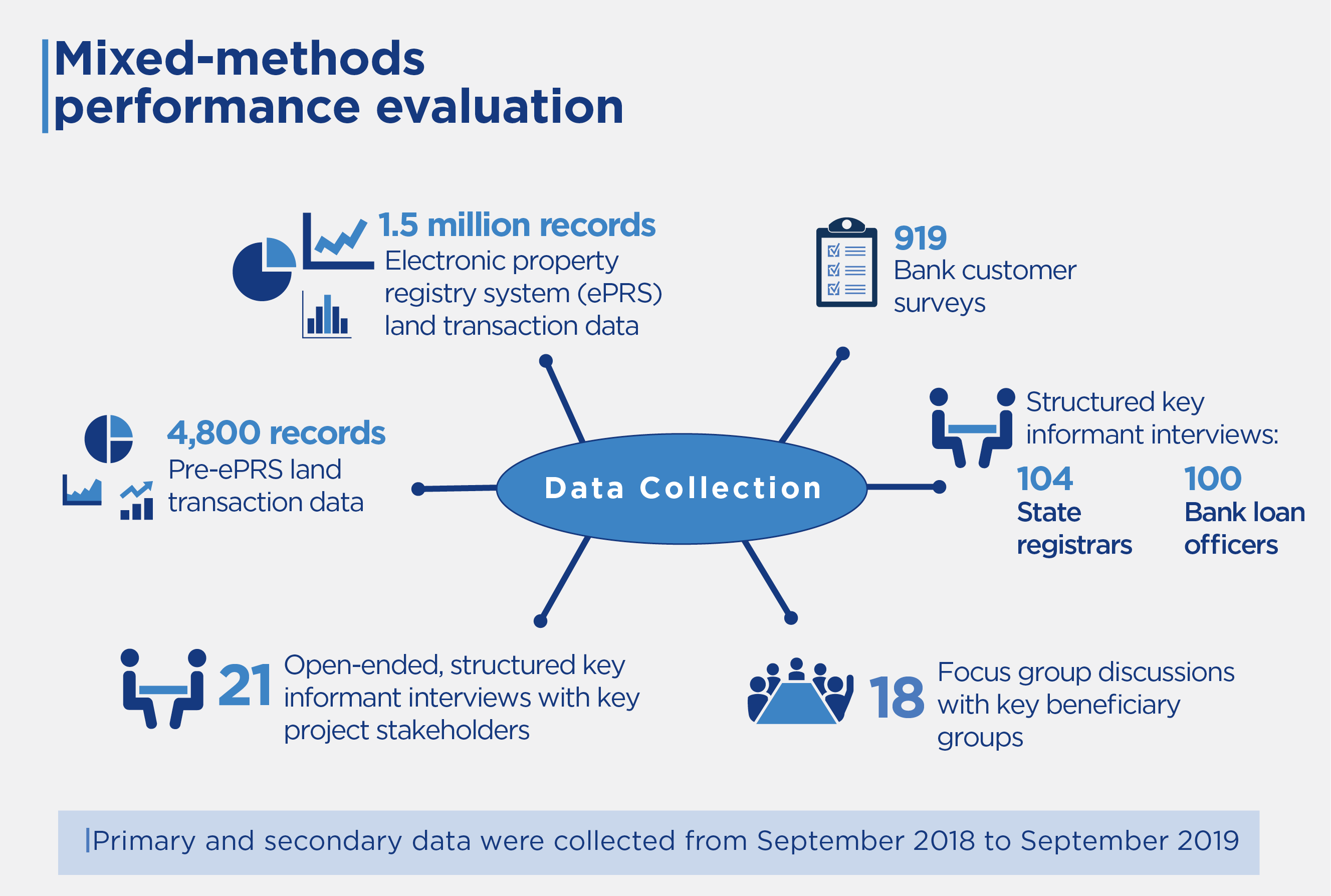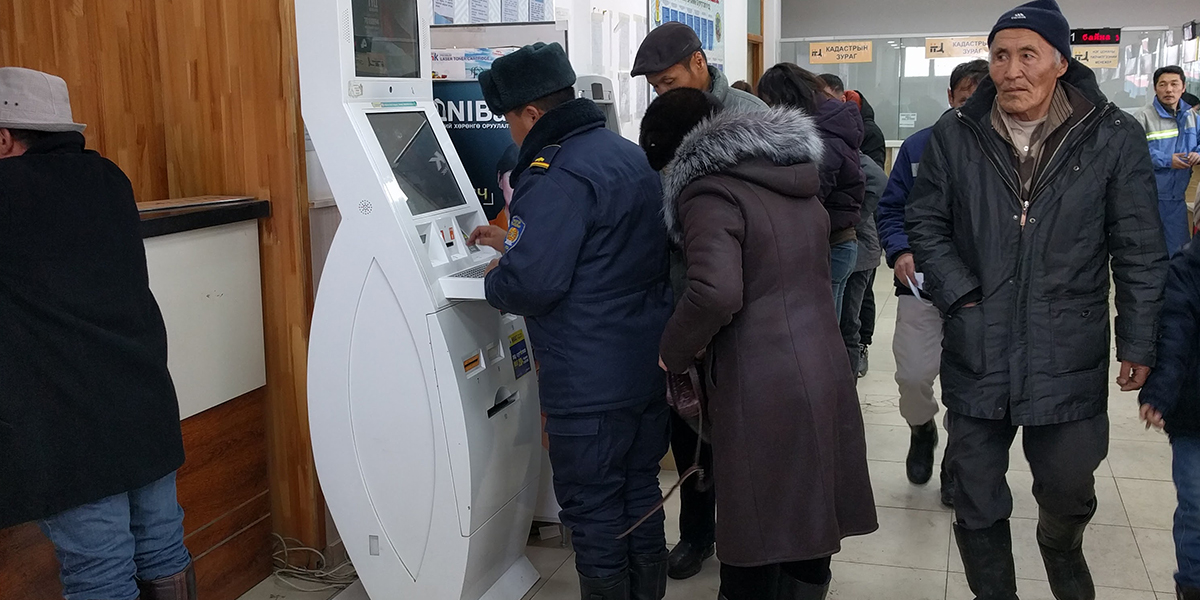Program Overview
MCC’s $284.9 million Mongolia Compact (2008–2013) funded the $28.5 million Property Rights Project (PRP) to streamline the complex and time-consuming process of privatizing and registering land and property rights and to improve management of periurban rangelands. PRP’s Improvement of the Land Privatization and Registration System Activity (RS) projected that improving and building the capacity of the land registry system would increase land transaction efficiency and transparency, in turn boosting confidence in the land governance system and capitalization of land assets in Mongolia.
Key Findings
Transaction Efficiency and Quality of Registry Services
- Decentralization led to pervasive and lasting time savings—an average of 13 days per registry transaction—and an average transaction cost savings of $11 (or 28%) by the customer for registry services.
- The electronic Property Registry System (ePRS) and paper records digitization improved state registrars’ access to information about prior land transactions. Efficiency gains in administrative processing times were largely limited to outside Ulaanbaatar.
Transaction Volume and Use of the Formal System
- Greater use of the formal system, evidenced by growth in land and property transfers and a 22% reduction in gifting property, is a key outcome that may be attributable to RS.
Access to Credit
- Time to complete the loan application process and unofficial costs declined by an average of two days (15% for mortgages and 32% for nonmortgage loans) and $15 (31%). RS improved customer experience and service during all loan application steps involving the property registry.
Women’s Empowerment
- The percentage of land and property transactions registered individually in women’s names rose from 31% at baseline to 43%; co-registration declined from 39% to 11%.
Evaluation Questions
This final performance evaluation was designed to answer the following questions:
- 1
Did the RS Activity:
A. change the time or cost of land transactions?
B. increase demand and volume of formal land registry transactions and mortgages? C. improve the quality of property registration services? - 2
What were the characteristics of those who conducted formal land transactions before and after the introduction of ePRS? - 3
Were there changes in the gender ratio of landowners? Were there any differences in results for parcels held by women and men?
Detailed Findings
Transaction Efficiency and Quality of Registry Services

Average Days Spent on Registry Transactions as Reported by Banking Customers, 2013–2018
Registry facility upgrades—including record digitization, ePRS, one-stop shops, and decentralization—improved accessibility of services and records, reducing land transaction times and costs. Training and capacity building also enhanced cadastral mapping and improved land use planning and customer service.
Increases in transaction efficiency are seen in some reductions in unofficial costs and customer time savings such as reduced waiting time and travel time. Land kiosks and an information exchange portal made possible by RS reduced the number of people traveling to registry offices for property reference letters (71 percent of customers used a kiosk in 2018) and related time and costs. Processing times in provincial capitals also declined between 2013 and 2017, but in Ulaanbaatar most internal office processing times increased.
Transaction Volume and Use of the Formal System
Overall, first-time registrations rose 34 percent between 2011 (before key interventions were completed) and 2014 (when interventions concluded); follow-on secondary transactions then picked up from 2014 to 2017, rising by 12 percent. These trends align with the RS objectives of increased land market activities and land asset capitalization. However, this is most likely due to a combination of factors, including RS. A 22 percent decline in gifting property from 2011 to 2017 could indicate increased use of the official legal system to buy and sell land in lieu of informal transfers by gift.
Access to Credit

Registry Service Satisfaction as Reported by Banking Customers, 2013–2018
Bank loan applicant satisfaction with the registry rose from 38 percent in 2013 to 63 percent in 2018. Time taken during all steps in the nonmortgage loan application process and some steps of the mortgage loan application process declined. Banking customers spent two fewer days preparing application materials for both mortgage and nonmortgage loans (15 percent and 32 percent declines, respectively) and 1.8 fewer days on property registry transactions (a 49 percent decline), averaged across transaction types from 2013 to 2018. Unofficial costs such as transportation expenses also fell by about $15 (31 percent) during the same period.
Collateralized nonmortgage loans rose in volume from 9,588 in 2008 to 59,337 in 2017. However, it is unclear whether the reduced transaction time/cost and improved customer service incited demand for and access to credit as mortgage loan collateral registration trends closely track the implementation of the government’s 8 percent mortgage loan subsidy program.
Women’s Empowerment
Women began to register land and immovable property individually in their own names more frequently. However, privatization rules changed in 2008, allowing every individual (rather than each household) to obtain a free land parcel, making it difficult to attribute changes to the project. Anecdotal evidence notes that women spend more time on land registration (such as office visits) than do their spouses. If this is the case, time and costs savings may have particularly benefited women. Although the study found some evidence that women are obtaining credit in their names more frequently due to RS, evaluation data suggest that, overall, women and men similarly access credit.
Economic Rate of Return
MCC considers a 10 percent economic rate of return (ERR) as the threshold to proceed with investment.
- 38%
Original ERR (2006) - 10%
Updated ERR (2011) - 16%
Evaluation-Based ERR (2017)
The ERR fell between 2008 and 2011 because the target for PRP-supported land registration was lowered. The ERR rose between 2011 and 2017 because of a period of high economic growth; a 2013 mortgage subsidy program; and, to a lesser extent, the 2008 expansion of Mongolia’s privatization law to allow for every individual (rather than each household) land privatization. The ERR attempts to account for the mortgage subsidies by modeling a counterfactual where the mortgage program but not the PRP occurred, but because this is a performance evaluation, it is not possible to definitively isolate the full RS effect.
MCC Learning
Establishment and sustainability of a national land information system requires not only a good contractor but also functioning information technology infrastructure, structurally sound buildings to house the system, training and maintaining staff, high-level government support, demand for formal land transaction services, and national level rollout.
Evaluations, and the logic and ERR models on which they are based, need to be realistic about when results can be expected. Evaluations should not measure results at the end of implementation but should measure shorter and longer-term results in line with the land evidence on necessary exposure periods.
MCC’s investments can provide the impetus to adopt legal reform; however, legal change takes time. Compacts should consider the use of conditions precedent if legal reforms are required for key outcomes.
Evaluations tracking land transaction time risk failure without a detailed understanding of which land transactions will be tracked, what part of the transaction process at which institutions will be captured, whether tracking administrative or consumer time, and the start/stop dates at each step along the process.
Evaluation Methods

This follow-up registry systems process study employed a rigorous mixed-methods performance evaluation approach.
The study combined administrative data analysis with pre-post analysis of two rounds of bank customer survey data. Bank customer surveys were conducted in 2013, prior to key program interventions, and again in 2018, approximately five years after the program’s end. The evaluation analyzed trends in administrative land transaction records such as transaction volume and processing time and tracked changes across levels of data, including transaction records and interviews with registration service users and providers. Secondary administrative data on bank loan portfolios complemented the survey data and provided important background information. Finally, qualitative data were collected from registry office users, key population subgroups, and main project stakeholders to add detailed context information.
2020-002-2358


